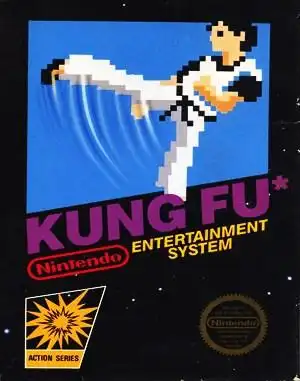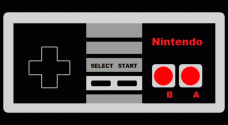Stepping off the noisy arcade floor and into our living rooms, some coin-op classics felt right at home on the Nintendo Entertainment System. One such game that delivered simple, satisfying action directly to your TV screen was the legendary Kung-Fu Master NES. More than just a port, this version brought the martial arts challenge to a new generation of players and left a surprising mark on gaming history.
Let's lace up our digital slippers, practice our high kicks, and revisit the journey up the Devil's Temple!
Bringing the Arcade Fight Home: The NES Port Story
Originally known as Spartan X in Japan (inspired by the Jackie Chan film Wheels on Meals), Irem's 1984 arcade hit, Kung-Fu Master, quickly became a global phenomenon. It wasn't just popular; it's widely credited as the very first beat 'em up game, pioneering the side-scrolling, multiple-enemy combat formula we know and love.
When Nintendo decided to bring this brawler to their burgeoning Famicom/NES console in 1985, they tasked none other than Shigeru Miyamoto with directing the port. This wasn't just a quick cash-in; Nintendo saw the potential in this side-scrolling action and wanted to make it work on their system. The result, released as Kung Fu in the West, was a slightly simplified but remarkably faithful adaptation that captured the core spirit of the arcade original. It sold millions worldwide and became a staple of early NES libraries.
Gameplay on the NES: Punching, Kicking, and Climbing
The premise is classic martial arts movie cheese: your girlfriend Sylvia has been kidnapped by the mysterious Mr. X and is being held captive at the top of the five-story Devil's Temple. As the titular Kung-Fu Master, Thomas, your job is simple: fight your way through hordes of enemies on each floor and defeat the boss guarding the stairs to the next level.
On the NES, the controls were straightforward:
- D-Pad: Move left/right, crouch, jump.
- A Button: Kick
- B Button: Punch
You had a health bar (a key innovation at the time!) and faced a variety of foes: basic goons, knife throwers, acrobatic "Tom Toms," and even environmental hazards like falling pots and dragons! Each floor culminated in a one-on-one boss fight, temporarily shifting the gameplay focus and requiring careful timing and attacks.
While the NES version might have lacked some of the arcade's visual flair or enemy density, it successfully translated the core loop: clear the floor, beat the boss, climb higher. It was challenging, sometimes frustrating (those gripping enemies!), but incredibly rewarding when you finally reached Mr. X at the top.
More Than Just a Game: Kung-Fu Master's HUGE Influence
The legacy of Kung-Fu Master, and its successful port to the NES, is far-reaching:
- The Birth of the Beat 'em Up: As mentioned, it's the granddaddy of the genre. Games like Double Dragon, Final Fight, and Streets of Rage owe a huge debt to this simple five-floor climb.
- Influence on Nintendo Icons: Shigeru Miyamoto's experience directing the Kung Fu port directly influenced his work on Super Mario Bros., particularly the concept of a side-scrolling game with varied environments and challenges. The health meter concept also appeared in Zelda II: The Adventure of Link, another title influenced by the Kung Fu port.
- Fighting Game Roots: The one-on-one boss battles with health bars laid groundwork for the fighting game genre. Takashi Nishiyama, the designer of the arcade Kung-Fu Master, went on to create Street Fighter at Capcom and later founded SNK, creating Fatal Fury and King of Fighters.
- Pop Culture Nod: The game even inspired elements of the Red Ribbon Army saga (specifically the Muscle Tower) in the legendary Dragon Ball manga and anime!
Playing Kung-Fu Master on the NES wasn't just playing a fun game; it was experiencing a foundational piece of video game history, right there on your console.
Nostalgia Factor: Why We Still Love It
For many retro gamers, the simple, repetitive music, the distinct sound effects of punches and kicks, and the challenge of getting just a little bit further up the tower are burned into memory. It wasn't the deepest game, but it was pure, unadulterated action that felt great to play.
The NES version, in particular, holds a special place. It was often one of the earlier, more accessible action titles available, introducing countless kids to the thrill of a martial arts showdown on their home console. It represents a time when arcade hits made the transition to home systems, often with compromises, but retaining enough magic to create lasting memories.
Playing Today: How to Revisit This Classic
Feeling the urge to rescue Sylvia yourself? You've got a few options:
- Original Hardware: Dust off that old NES!
- Emulation: Use emulators like Mesen or FCEUX to play ROMs (remember to own the original cartridge!).
- Official Collections: The arcade version has appeared on various retro collections over the years. The NES version occasionally shows up on Nintendo's own retro offerings or services.
- Archive.org: Sometimes, browser-based versions of classic arcade games can be found on platforms like Archive.org.
However you play it, experiencing Kung-Fu Master today offers a clear look at where the beat 'em up genre began and how a simple arcade port on the NES could influence generations of games to come.
FAQ
Q: Is the NES version exactly like the arcade game? A: No, the NES version is a simplified port. It has fewer enemies on screen, less detailed graphics, and some minor gameplay adjustments compared to the arcade original. However, it retains the core structure and feel.
Q: Was the NES version called "Kung Fu Master" or "Kung Fu"? A: In North America and Europe, the NES version was released by Nintendo simply as "Kung Fu". The arcade game was known as "Kung-Fu Master" internationally (and "Spartan X" in Japan).
Q: Who designed the original Kung-Fu Master arcade game? A: Takashi Nishiyama designed the original arcade game for Irem. He later moved to Capcom and designed Street Fighter.
Q: Is there a sequel to Kung-Fu Master on NES? A: There was a Game Boy sequel and a Japan-only Famicom sequel (Spartan X 2), but no direct sequel was released for the NES in North America.
Conclusion
Kung-Fu Master on the NES might not be the flashiest game in the console's library, but its historical significance and pure, unadulterated fun make it a mandatory play for any retro enthusiast. It's a foundational piece of the beat 'em up genre, a testament to the power of arcade ports, and a game that helped shape the future of Nintendo itself.
So, next time you're looking for a quick dose of classic action, remember Thomas and his quest up the Devil's Temple. Just try not to get grabbed by those pesky goons!


